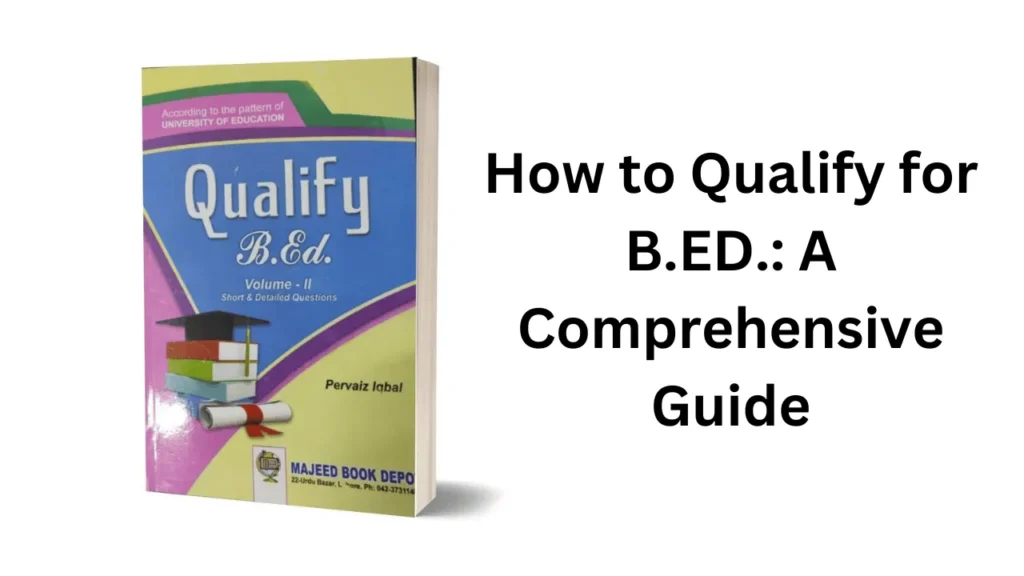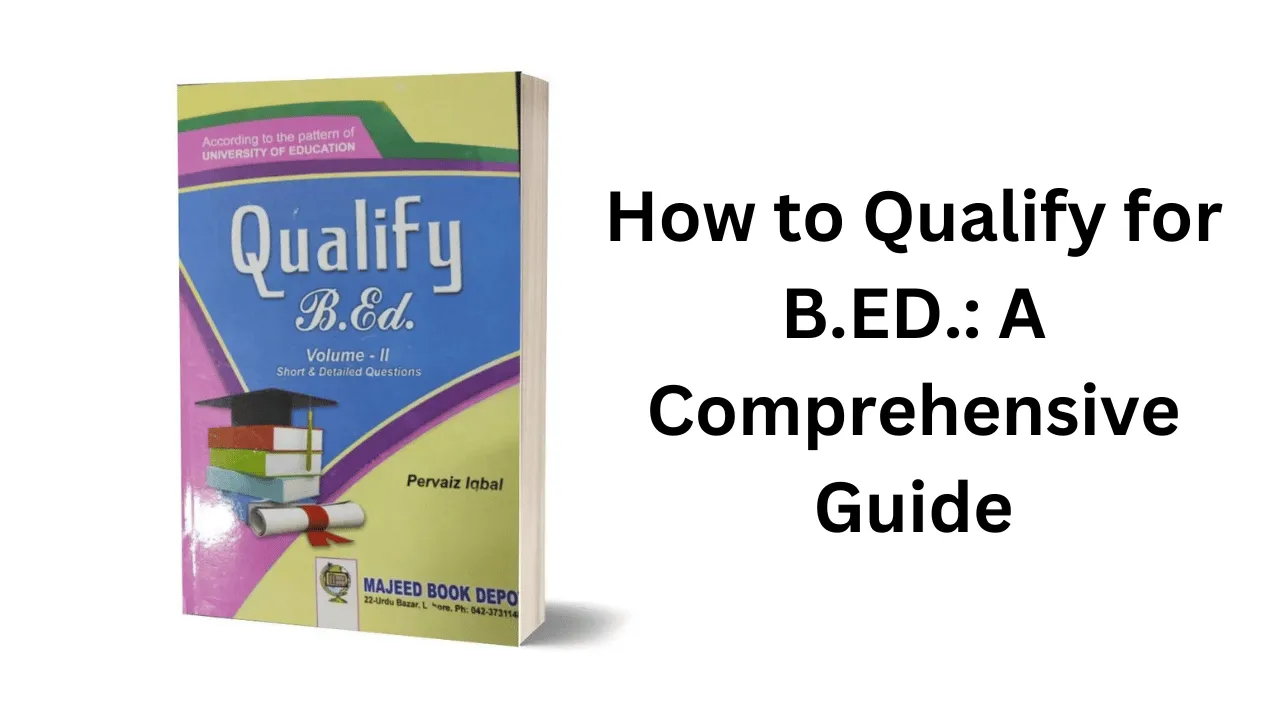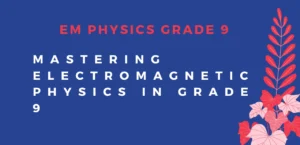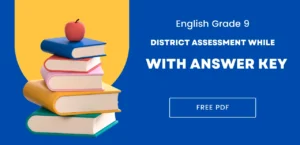How to Qualify for B.ED.: A Comprehensive Guide
Qualify for B.ED. Free PDF Read Online Latest Edition 2024 Aiou Students
Introduction

Are you passionate about shaping young minds and contributing to the future of education? If so, pursuing a Bachelor of Education (B.ED.) degree might be the perfect path. This comprehensive guide will walk you through everything you need to qualify for a B.ED. program, from eligibility criteria to career prospects and beyond.
In today’s rapidly evolving educational landscape, well-trained teachers are more crucial than ever. A B.ED. degree equips you with the necessary skills and knowledge to excel in the classroom and opens doors to a wide range of opportunities in the education sector. Whether you’re a recent graduate considering your career options or a working professional looking to transition into teaching, this article will provide you with valuable insights to help you make an informed decision.
Throughout this guide, we’ll explore the various aspects of B.ED. qualification, including admission processes, entrance exams, course structure, and job opportunities. By the end, you’ll have a clear understanding of what it takes to embark on this rewarding educational journey.
What is B.ED?
B.ED, which stands for Bachelor of Education, is a professional degree program designed to prepare individuals for careers in teaching and education. This undergraduate course typically spans two years and focuses on developing the pedagogical skills, subject knowledge, and practical experience necessary for effective classroom instruction.
The origins of formal teacher training programs can be traced back to the early 19th century, with the establishment of normal schools. Over time, these programs evolved into more comprehensive degree courses, leading to the modern B.ED curriculum we see today.
The importance of a B.ED degree in the teaching profession cannot be overstated. It serves as a fundamental qualification for those aspiring to teach at the secondary and higher secondary levels in most countries. Moreover, a B.ED equips educators with:
- In-depth understanding of educational theories and practices
- Skills to design effective lesson plans and curricula
- Techniques for classroom management and student engagement
- Knowledge of diverse learning styles and special educational needs
- Proficiency in using educational technology and modern teaching aids
By providing a solid foundation in these areas, a B.ED degree ensures that teachers are well-prepared to meet the challenges of modern education and positively impact their students’ lives.
Eligibility Criteria for B.ED
Before embarking on your B.ED journey, it’s crucial to understand the eligibility criteria. While specific requirements may vary slightly depending on the institution and region, here are the general qualifications you’ll need to meet:
Educational Qualifications
- Bachelor’s Degree: A minimum of a bachelor’s degree in any discipline from a recognized university is typically required. This could be a B.A., B.Sc., B.Com., or any other equivalent degree.
- Minimum Marks: Most institutions require a minimum of 50% aggregate marks in the bachelor’s degree. Some universities may have slightly higher or lower requirements.
- Subject-Specific Requirements: For certain teaching specializations, you may need to have studied specific subjects in your bachelor’s degree. For example, if you wish to teach science subjects, a B.Sc. degree might be preferred.
Age Requirements
While age limits can vary, many institutions have the following guidelines:
- Minimum Age: Usually 18 years at the time of admission
- Maximum Age: Often around 35 years, though some universities may not have an upper age limit
Other Specific Criteria
- Language Proficiency: Some institutions may require proficiency in the local language or English, depending on the medium of instruction.
- Entrance Exam Scores: Many B.ED programs require candidates to clear specific entrance exams (more on this in the next section).
- Work Experience: While not always mandatory, some programs may give preference to candidates with teaching experience or related work in the education sector.
It’s important to note that these criteria can vary, and some institutions may have additional requirements. Always check the specific eligibility conditions of the universities or colleges you’re interested in before applying.
B.ED Admission Process
Navigating the B.ED admission process can seem daunting, but understanding the steps involved will help you prepare effectively. Here’s a general overview of what you can expect:
Application Procedure
- Research and Shortlist: Begin by researching B.ED programs offered by various institutions. Consider factors such as curriculum, faculty, placement records, and location.
- Online Application: Most institutions now offer online application systems. You’ll need to create an account on the university’s portal and fill out the application form with your personal and academic details.
- Document Submission: You’ll be required to upload scanned copies of necessary documents, which typically include:
- Graduation degree certificate and mark sheets
- 10th and 12th standard certificates
- Valid ID proof
- Recent passport-sized photograph
- Any additional certificates or proof of work experience (if applicable)
- Application Fee: Pay the required application fee through the available online payment methods.
- Entrance Exam: Register for and appear in the relevant entrance exam(s) if required by your chosen institutions.
Important Dates and Deadlines
While specific dates vary by institution and year, here’s a general timeline to keep in mind:
- Application Start Date: Usually 3-4 months before the academic year begins
- Last Date for Application Submission: Typically 1-2 months before the start of the academic year
- Entrance Exam Dates: Often held 2-3 months before the course commencement
- Result Declaration: Usually within a month after the entrance exam
- Counseling and Seat Allotment: Follows shortly after the result declaration
- Course Commencement: Generally aligns with the start of the academic year (July/August in many countries)
Always check the official websites of your chosen institutions for the most up-to-date and accurate information regarding admission dates and deadlines.
B.ED Entrance Exams
Many B.ED programs require candidates to clear specific entrance exams as part of the admission process. These exams are designed to assess your aptitude for teaching and your knowledge of relevant subjects. Here’s what you need to know:
Common Entrance Exams
- Central Teacher Eligibility Test (CTET): While primarily for teacher recruitment, some institutions consider CTET scores for B.ED admissions.
- State-level Common Entrance Tests: Many states conduct their B.ED entrance exams. Examples include:
- Maharashtra B.ED CET
- UP B.ED Joint Entrance Examination
- Delhi University B.ED Entrance Test
- University-specific Entrance Tests: Some universities conduct their entrance exams for B.ED admissions.
Exam Patterns and Syllabus
While patterns may vary, most B.ED entrance exams typically cover the following areas:
- Teaching Aptitude
- General Knowledge and Current Affairs
- Reasoning Ability
- Language Proficiency (English and/or regional language)
- Subject-specific Knowledge (based on the candidate’s graduation subject)
The exams are usually multiple-choice questions (MCQs) based, with a duration of 2-3 hours.
Preparation Tips
- Understand the Syllabus: Thoroughly review the exam syllabus and pattern.
- Focus on Basics: Strengthen your understanding of fundamental concepts in your subject area.
- Improve General Knowledge: Stay updated with current affairs and general knowledge.
- Practice Mock Tests: Regularly attempt mock tests to familiarize yourself with the exam format and improve time management.
- Develop Reading Habits: Read newspapers, educational journals, and relevant books to enhance your knowledge and language skills.
- Join Study Groups: Collaborate with other aspirants to share knowledge and solve doubts.
- Time Management: Practice solving questions within time constraints to improve your speed and accuracy.
Remember, consistent and focused preparation is key to succeeding in these entrance exams.
B.ED Course Structure
Understanding the B.ED course structure will give you a clear picture of what to expect during your two-year journey. While specific details may vary between institutions, here’s a general overview:
Duration of the Course
The B.ED program typically spans two academic years, divided into four semesters. Each semester usually lasts about six months.
Syllabus Overview
The B.ED curriculum is designed to provide a balanced mix of theoretical knowledge and practical skills. Here’s a broad outline of what you can expect to study:
- Foundations of Education
- Philosophy of Education
- Sociology of Education
- Psychology of Learning and Development
- Pedagogy and Teaching Methods
- Instructional Strategies
- Classroom Management
- Educational Technology
- Curriculum Development
- Principles of Curriculum Design
- Assessment and Evaluation Techniques
- Subject-Specific Courses
- Based on your chosen teaching subjects (e.g., Mathematics, Science, Languages, Social Studies)
- Inclusive Education
- Understanding Diverse Learners
- Special Education Needs
- Educational Research
- Basic Research Methodologies
- Action Research in Education
- Educational Policies and Management
- School Organization and Management
- Education Policies and Regulations
Practical Training Components
Practical experience is a crucial aspect of B.ED programs. This typically includes:
- Microteaching Sessions: Practice teaching short lessons to peers under supervision.
- School Internships: Spend extended periods (usually 4-6 weeks per year) teaching in actual school settings.
- Lesson Planning and Execution: Develop and implement lesson plans for various subjects and age groups.
- Creating Teaching Aids: Design and use educational materials and teaching aids.
- Observation and Feedback: Observe experienced teachers and receive constructive feedback on your teaching.
- Community Engagement: Participate in educational activities within the local community.
This combination of theoretical study and practical experience ensures that B.ED graduates are well-prepared to take on the challenges of real classroom teaching.
Types of B.ED Programs
The field of education offers various pathways to obtain a B.ED degree, catering to different needs and circumstances. Understanding these options can help you choose the program that best fits your situation:
Regular B.ED
- Format: Full-time, on-campus program
- Duration: 2 years
- Suitable for: Recent graduates or those able to commit to full-time study
- Features:
- Face-to-face lectures and interactions
- Immediate access to faculty and resources
- Structured practical training and internships
Integrated B.ED
- Format: Combined bachelor’s degree and B.ED program
- Duration: Usually 4 years
- Suitable for: Students who decide early to pursue a teaching career
- Features:
- Saves time by combining undergraduate studies with teacher training
- Provides a more comprehensive educational background
- Often includes extended internship periods
Distance/Online B.ED
- Format: Flexible, remote learning program
- Duration: 2 years (may be extended in some cases)
- Suitable for: Working professionals or those unable to attend regular classes
- Features:
- Self-paced learning with online resources
- Virtual classroom sessions and discussions
- Practical components are often conducted during vacations or weekends
Each type of B.ED program has its advantages, and the choice depends on your circumstances, career goals, and learning preferences. Consider factors such as your availability, financial situation, and preferred learning style when deciding which program type is best for you.
Top B.ED Colleges in [Country/Region]
Choosing the right institution for your B.ED can significantly impact your learning experience and future career prospects. While the “best” college can vary based on individual needs and preferences, here are some factors to consider when evaluating B.ED institutions:
- Accreditation and Recognition
- Faculty Expertise and Qualifications
- Curriculum and Specializations Offered
- Infrastructure and Learning Resources
- Placement Record and Alumni Network
- Research Opportunities
- Fees and Financial Aid Options
While I can’t provide a definitive list of top colleges (as rankings can change and vary by source), I recommend researching reputable institutions in your country or region. Look for universities with strong education departments, positive student reviews, and good placement records.
When choosing a B.ED college, consider:
- Location: Proximity to your home or preferred work area
- Specializations: Alignment with your teaching subject interests
- Internship Opportunities: Quality and variety of practical training options
- Technology Integration: Use of modern educational tools and methods
- Extra-curricular Activities: Opportunities for holistic development
Remember to visit the websites of shortlisted institutions, attend college fairs, and if possible, visit campuses to get a better feel for the learning environment.
B.ED vs M.ED: Which One Should You Choose?
When planning your career in education, you might wonder whether to pursue a B.ED or go further with an M.ED (Master of Education). Here’s a comparison to help you understand the differences:
B.ED (Bachelor of Education)
- Level: Undergraduate
- Duration: Typically 2 years
- Focus: Foundational teaching skills and subject knowledge
- Career Prospects:
- School teacher (primary, secondary, higher secondary)
- Educational counselor
- Content developer for educational materials
M.ED (Master of Education)
- Level: Postgraduate
- Duration: Usually 2 years
- Focus: Advanced educational theories, research, and specialized areas
- Career Prospects:
- College/University lecturer
- Educational administrator
- Curriculum designer
- Educational researcher
Choosing Between B.ED and M.ED
Your choice depends on your career goals:
- If you want to start teaching in schools immediately, a B.ED is sufficient and the right choice.
- If you aspire to teach in higher education or take on leadership roles in the education sector, an M.D. might be more suitable.
- Many educators complete their B.ED, gain some teaching experience, and then pursue an M.ED to advance their careers.
- Some institutions offer integrated B.ED-M.ED programs, which can be a good option if you’re certain about committing to a longer period of study.
Remember, you can always start with a B.ED and decide on further studies later based on your experiences and career aspirations.
Job Opportunities After B.ED
A B.ED degree opens up a variety of career paths in the education sector. Here are some of the key job opportunities available to B.ED graduates:
Teaching Roles in Various Educational Institutions
- School Teacher: The most common career path, teaching in primary, secondary, or higher secondary schools.
- Special Education Teacher: Working with students who have learning disabilities or special needs.
- Preschool Teacher: Teaching in kindergartens or early childhood education centers.
- Adult Education Instructor: Teaching literacy, language, or vocational skills to adults.
Other Career Options in the Education Sector
- Educational Counselor: Guiding students in academic and career choices.
- Instructional Coordinator: Developing and implementing school curricula and teaching standards.
- Education Writer: Creating textbooks, educational materials, or content for e-learning platforms.
- Corporate Trainer: Designing and conducting training programs in corporate settings.
- Education NGO Worker: Contributing to educational initiatives in non-profit organizations.
- Online Tutor: Providing one-on-one or group tutoring through digital platforms.
- Educational Technology Specialist: Implementing and managing educational software and technology in schools.
- Education Policy Analyst: Working with government bodies or think tanks on education policy matters.
- School Administrator: Taking on roles such as principal, vice-principal, or department head (often requires additional experience or qualifications).
- Educational Tour Coordinator: Organizing and leading educational trips and excursions.
The education sector is continually evolving, and new roles are emerging, especially in areas like e-learning, educational technology, and specialized teaching methods. Your B.ED degree provides a strong foundation that can be built upon with additional skills and experience to suit various career paths within education and related fields.
Challenges and Benefits of Pursuing B.ED
Like any professional course, pursuing a B.ED comes with its own set of challenges and rewards. Understanding these can help you prepare better and make the most of your educational journey.
Common Challenges Faced by B.ED Students
- Balancing Theory and Practice: Integrating theoretical knowledge with practical teaching skills can be challenging.
- Time Management: Juggling coursework, assignments, and teaching practice requires efficient time management.
- Adapting to Different Learning Styles: Understanding and catering to diverse student needs during internships can be demanding.
- Keeping Up with Educational Technology: Staying updated with the latest educational tools and technologies is an ongoing challenge.
- Handling Classroom Dynamics: Learning to manage student behavior and create an engaging learning environment takes time and practice.
- Meeting Academic Standards: Maintaining good grades while participating in various practical components of the course can be stressful.
- Job Market Competition: With many B.ED. graduates each year, finding the ideal teaching position can be competitive.
Long-term Benefits of the Degree
- Career Stability: Education is a relatively stable sector, offering job security and steady career progression.
- Personal Growth: Teaching nurtures patience, empathy, and communication skills, contributing to personal development.
- Continuous Learning: The profession encourages lifelong learning and staying updated with new knowledge.
- Making a Difference: The opportunity to positively impact students’ lives and shape future generations is deeply rewarding.
- Diverse Career Options: A B.ED opens doors to various roles within
- Emotional Fulfillment: The sense of accomplishment from helping students learn and grow can be highly satisfying and motivating.
How to Make the Most of Your B.ED Program
To maximize the benefits of your B.ED journey and prepare yourself for a successful teaching career, consider the following tips:
Tips for Success During the Course
- Active Participation: Engage fully in class discussions, group projects, and practical sessions. This enhances your learning and helps you retain information better.
- Seek Mentorship: Build relationships with your professors and experienced teachers. Their guidance can be invaluable for your professional development.
- Embrace Technology: Familiarize yourself with educational technology tools and platforms. This will make you more versatile and adaptable as an educator.
- Read Widely: Go beyond the prescribed curriculum. Read educational journals, research papers, and books on innovative teaching methods.
- Reflect on Your Practice: Keep a teaching journal to reflect on your experiences during internships and practice sessions. This self-reflection is crucial for improvement.
- Collaborate with Peers: Form study groups and collaborate on projects. This mimics the collaborative nature of the teaching profession and enhances your teamwork skills.
- Attend Workshops and Seminars: Participate in additional educational events to broaden your knowledge and stay updated with the latest trends in education.
Developing Essential Skills for Teaching
- Communication Skills: Practice clear and effective communication, both verbal and written. This is crucial for explaining concepts to students and interacting with parents and colleagues.
- Classroom Management: Learn various strategies for maintaining discipline and creating a positive learning environment.
- Adaptability: Develop the ability to adjust your teaching methods to suit different learning styles and situations.
- Empathy and Emotional Intelligence: Cultivate these qualities to better understand and support your students’ emotional and social needs.
- Creativity: Explore innovative ways to present information and engage students. This could involve creating visual aids, games, or interactive lessons.
- Time Management: Hone your ability to plan lessons, grade assignments, and manage administrative tasks efficiently.
- Cultural Sensitivity: Develop an understanding and respect for diverse cultural backgrounds, as you’ll likely work with students from various backgrounds.
- Technology Proficiency: Stay updated with educational software, online learning platforms, and digital tools that can enhance your teaching.
- Conflict Resolution: Learn techniques for mediating conflicts among students and addressing challenging behavior constructively.
- Continuous Learning: Cultivate a mindset of lifelong learning. The field of education is constantly evolving, and staying current is key to being an effective educator.
Future of B.ED and Teaching Profession
As we look ahead, it’s important to consider the evolving landscape of education and how it might impact B.ED programs and the teaching profession:
Emerging Trends in Teacher Education
- Emphasis on Digital Literacy: B.ED curricula are increasingly incorporating courses on educational technology and digital teaching methods.
- Focus on Inclusive Education: There’s a growing emphasis on preparing teachers to work with diverse learners, including students with special needs.
- Integration of Soft Skills: Programs are placing more importance on developing teachers’ emotional intelligence, leadership, and communication skills.
- Project-Based Learning: Many B.ED programs are adopting more hands-on, project-based approaches to teacher training.
- Global Perspective: There’s a trend towards internationalizing teacher education, preparing educators for global classrooms.
Technological Advancements in the Field
- Virtual and Augmented Reality: These technologies are being used to create immersive learning experiences and simulated classroom environments for practice teaching.
- Artificial Intelligence in Education: AI is being integrated into learning management systems and adaptive learning platforms, requiring teachers to be familiar with these tools.
- Data-Driven Decision-Making: Teachers are increasingly expected to use data analytics to inform their teaching strategies and student assessments.
- Gamification of Learning: The use of game-based learning strategies is growing, and teachers need to be equipped to implement these effectively.
- Personalized Learning Platforms: Technology is enabling more personalized, adaptive learning experiences, changing the role of teachers to more of facilitators and guides.
As the education landscape continues to evolve, B.ED programs and teaching professionals will need to adapt continuously. The future of education looks exciting, with opportunities for innovative teaching methods, personalized learning experiences, and global collaboration.
Conclusion
Embarking on a B.ED journey is a significant step towards a rewarding career in education. This comprehensive guide has covered the key aspects of qualifying for a B.ED program, from understanding the eligibility criteria and admission process to exploring the course structure and future career prospects.
Remember, becoming a teacher is not just about acquiring a degree; it’s about developing a passion for learning and imparting knowledge. The challenges you may face during your B.ED program are stepping stones that will help you grow into an effective and inspiring educator.
As you move forward, keep in mind that the field of education is dynamic and ever-evolving. Stay curious, remain open to new ideas and technologies, and never stop learning. Your journey as an educator doesn’t end with a B.ED degree – it’s just the beginning of a lifelong adventure in shaping young minds and contributing to the future of our society.
Whether you choose to teach in a traditional classroom, explore innovative educational technologies, or pursue leadership roles in education, your B.ED will provide you with a strong foundation. Embrace the opportunities, face the challenges with determination, and remember the profound impact you can have as an educator.
We encourage you to take the next step in your educational journey. Research programs, prepare for entrance exams, and envision the educator you want to become. The world of teaching awaits you, full of opportunities to make a lasting difference in the lives of your future students.
FAQs About Qualifying for B.ED
- Q: Can I pursue a B.ED right after my 12th grade? A: Generally, no. Most B.ED programs require a bachelor’s degree as a prerequisite. However, some universities offer integrated programs that combine a bachelor’s degree with a B.ED.
- Q: Is there an age limit for pursuing a B.ED? A: While many institutions have an upper age limit of around 35 years, some universities don’t have any age restrictions. Always check with the specific institution you’re interested in.
- Q: Can I work while pursuing a B.ED? A: It’s challenging to work full-time during a regular B.ED program due to the intensive coursework and teaching practice. However, distance or online B.ED programs offer more flexibility for working professionals.
- Q: Is B.ED valid internationally? A: While a B.ED from a recognized institution is generally respected internationally, you may need to meet additional requirements to teach in other countries, such as language proficiency tests or local teaching certifications.
- Q: Can I specialize in multiple subjects in B.ED? A: Most B.ED programs allow you to choose one or two teaching subjects. The options usually depend on your bachelor’s degree specialization.
- Q: How important are entrance exams for B.ED admission? A: The importance varies by institution. Some universities rely heavily on entrance exam scores, while others consider a combination of factors including academic performance and interviews.
- Q: What if I don’t clear the B.ED entrance exam on my first attempt? A: You can usually retake the exam the following year. Use the time to strengthen your preparation and consider applying to institutions that may have different admission criteria.
- Q: Is teaching practice compulsory in B.ED? A: Yes, teaching practice or internship is a crucial and mandatory component of B.ED programs, providing hands-on classroom experience.
- Q: Can I pursue higher studies after my B.ED.? A: Absolutely. Many B.ED. graduates go on to pursue a B.ED., M.Phil., or Ph.D. in education to advance their careers in teaching or educational research.
- Q: Are there job guarantees after completing a B.ED.? While a B.ED significantly enhances your employability in the education sector, job guarantees depend on various factors, including your performance, the job market, and sometimes additional certifications required by specific schools or regions.
Remember, the field of education is vast and ever-evolving. A B.ED degree opens doors to numerous opportunities, and your success will depend on your passion, skills, and continuous effort to grow as an educator.
Read Online Qualify for B.ED. Free PDF Read Online Latest Edition 2024 Aiou Students














1 comment